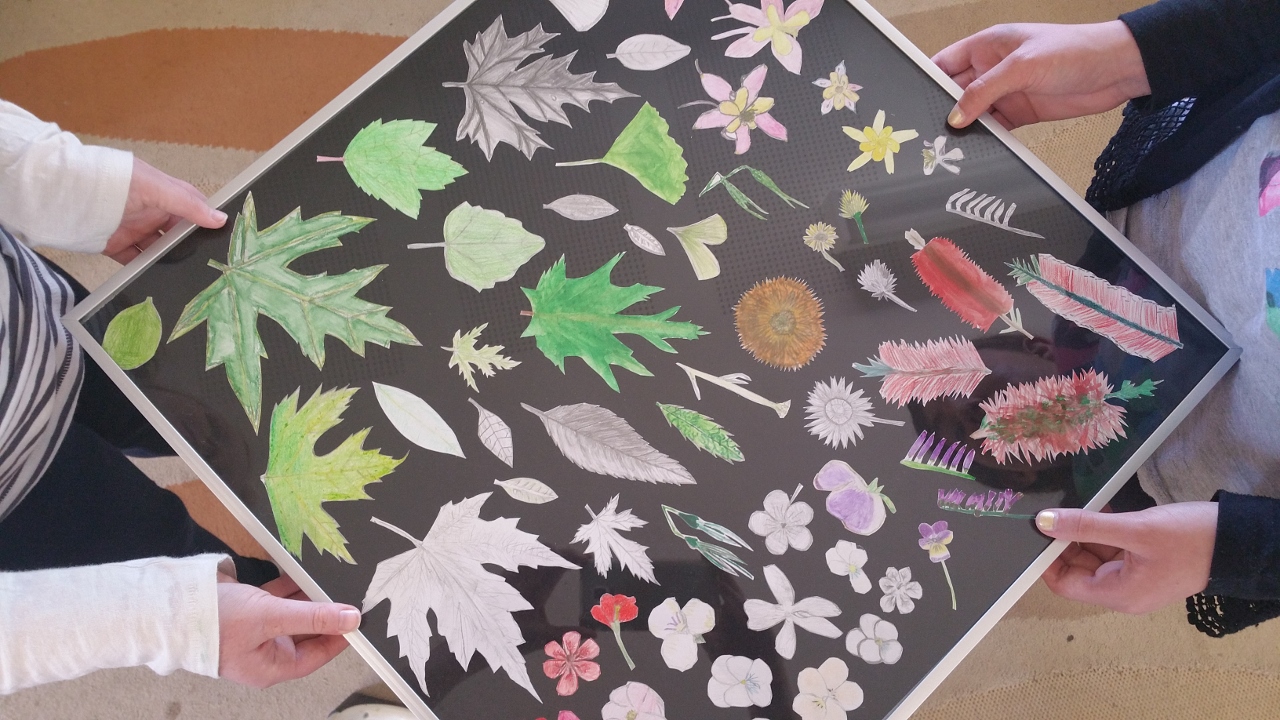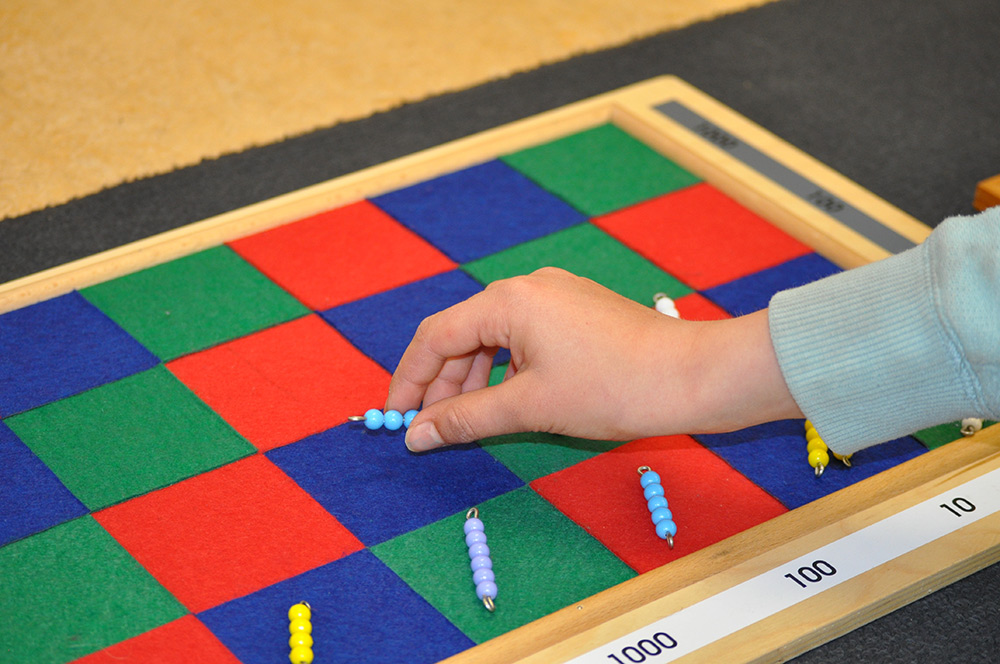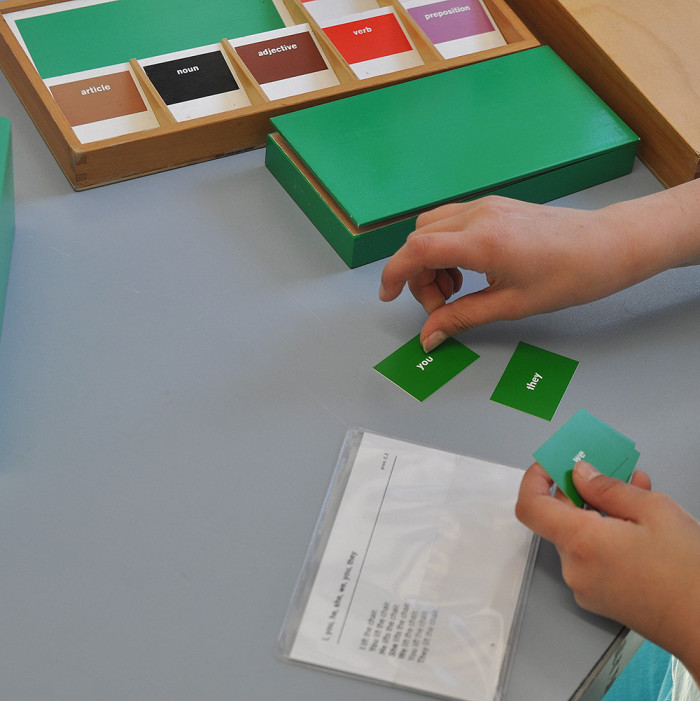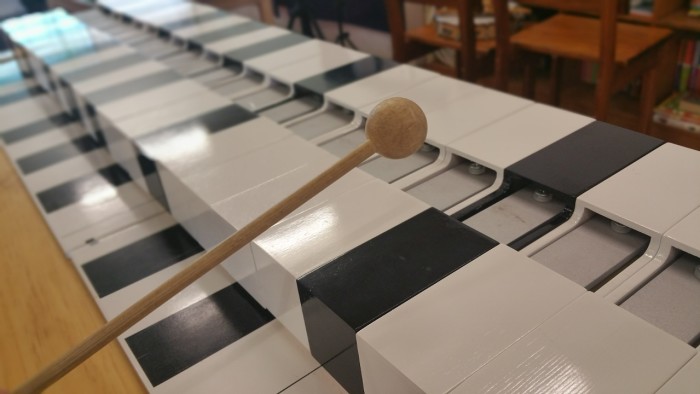On entry to Cycle 2 your child is on a journey of continuum to the end of Cycle 3. The Montessori approach does not change between Cycle 2 and Cycle 3 but there are different expectations of the child at the different ages. As your child nears the end of Cycle 1 you will hear your Director comment on how your child has consolidated their learning after the repeated presentations of their lessons. This consolidation is vital as your child steps up into Cycle 2. On the physical side, your child is becoming stronger as childhood illnesses are past, adult teeth are growing in and they gain height. On the social and emotional side, appearance is less important to your child and the good manners seen in Cycle 1 take a back seat for the children who are suddenly becoming more extroverted. They want to be with other children and form rules within the group. Once involved in group work, your child has the opportunity to view and begin to understand the contributions and strengths of individuals. Teamwork and the roles within the group are defined as the children divide tasks based on strengths. All these changes are well understood by our Cycle 2 Directors, and they present the lessons and work with the students accordingly.
History and pre-history are incredibly fascinating to your child at the moment. This interest is the basis for expanding reading and writing skills. The knowledge of the grammar symbols first introduced in Cycle 1 is now used to assist their writing style in Cycle 2. The interconnections between the concepts introduced to your child in their early years allows them to easily build on this previous knowledge. Their interest in history also includes stories such as that of the Ancient Greeks. The focus on what our predecessors discovered leads to exploration of mathematical theorems and concepts. Cycle 2 is an exciting time for everyone. Please see the gallery below for more information on specific elements of the Cycle 2 classroom.
The Great Lessons (Cosmic Education)
Grammar Boxes (Language)
Visual Art (Culture)
The Checker Board (Maths)
Tone Bars (Culture)
-

The Great Lessons (Cosmic Education)
In Cycle 1, your child was presented with the World, via globes and puzzle maps. In Cycle 2, your child is now presented with the Universe. Dr Montessori considered the universe and its interconnections the perfect match for Cycle 2 children, who at this age exercise great imaginations. The Directors present the 5 Great Lessons as stories; “The Beginning of the Universe”, “The Story of Life”, “The Story of Humans”, “The Story of Language” and “The Story of Numbers”. These stories are accompanied by simple experiments and illustrations or charts and lead the children to explore not only specific topics, such as biology, physics, chemistry, culture, geography and more, but also how each of those topics intersects with the other. Essentially, these 5 Great Lessons provide a framework for the curriculum going forward, and spark an interest that is developed upon year after year in the environment. -

Grammar Boxes (Language)
The Montessori Grammar Boxes are used to study word patterns, variations and meanings. Using colour coded word cards, the children explore constructing text. The cards easily identify the difference in words and can also be manipulated to create different meaning. Grammar symbols are placed over words to make the grammar patterns more visible and understandable to the children. -

Visual Art (Culture)
In the Primary years (Cycle 2 and Cycle 3), your child is exposed to and practices many forms of art in a way that integrates with other curriculum areas. For example, while working on a research project, models, dioramas and charts are made. While working on a play or designing aprons for our Grove Café, the children are constantly free to create. The skills your child has acquired in Cycle 1 means that they appreciate and maintain the materials as would an artist. Art appreciation is linked with the lessons of history and geography and extended by the Director who, in preparing the environment, supplies rich resources for your children to work with. -

The Checker Board (Maths)
The Checkerboard is used for multiplication. Together with the Bead Bars, it helps students master multiplication using four and more digit numbers. Each Bead Bar represents the numbers 1 through 9. Each coloured square represents one level of the hierarchy of numbers: units (green), tens (blue), hundreds (red), units of thousands (green), tens of thousands (blue) etc. progressing to hundreds of millions. Thus, a Bead Bar with four beads placed on a blue square for 10,000 represent the number 40,000. The children can build very distinct visual pictures of large numbers and their components this way, allowing them to easily and literally understand how one number may be multiplied by another. Regular use of the Checkerboard allows the children to move onto completing the same problems on paper as they move from concrete to abstract learning. -

Tone Bars (Culture)
In the 3 to 6 environment the children have worked with the Montessori Bells to match, grade and learn the notes. The Tone Bars are the extension of the Bells and comprise 25 moveable metal bars on a wooden keyboard spanning two octaves. Refinement of pitch and further knowledge of musical notation and theory is developed over the three year cycle. When visiting our school, you will often hear music played on various instruments drifting out across the grounds as the children follow the innate forces of their imagination and creativity.
Read about Cycle 3 (9-12 year olds)






